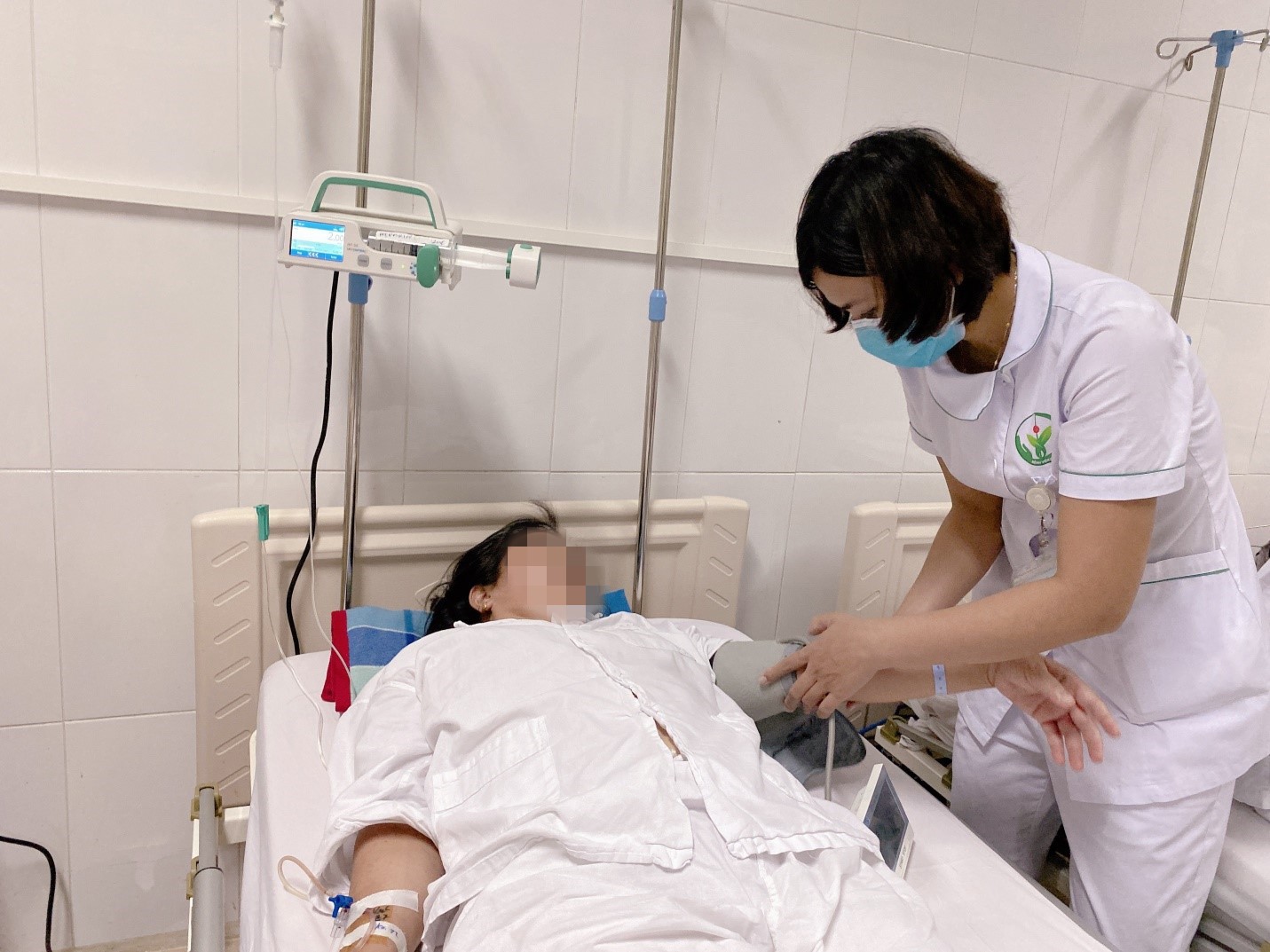Viet Duc University Hospital saved lives of two patients with artificial valves obstruction (stuck)
28/07/2020 10:27
In the morning of July 9, Viet Duc University Hospital said the hospital had just used thrombolytic medicine to promptly save 2 patients who had an artificial thrombosis valve.
It was patient N.T.L (48 years old, Hai Duong), has a history of mechanical artificial valve replacement 2 years ago. After surgery, patient still go for regular checkups. However, due to the situation of Covid-19 epidemic, since January 1st, 2020, Ms. N.T.L did not go to hospital for health check and blood clotting test. 10 days ago, Ms. N.T.L appeared with left chest pain, shortness of breath. She was hospitalized in the state of tachycardia, hemodynamics began to disordered, dyspnea NYHA II- III, tested for anticoagulant index (INR) lower than target. In parallel with coagulation test, very soon the patient had an echocardiogram and doctors diagnosed her with a mechanical artificial valve obstruction. Doctors said the above sign of Ms. N.T.L is the result of not going to the clinic and not adjusting the anticoagulant dose regularly.
Suspecting the condition was caused by a newly formed blood clot, doctors at Cardiovascular and Thoracic Center, Viet Duc University Hospital conducted an esophageal echocardiography to assess valve condition and confirm diagnosis of artificial valve obstruction due to newly formed thrombosis. Through general consultation, doctors decided to use thrombolytic medicines for patient according to the regimen. During the time of medication, Ms. N.T.L was closely monitored for the status of perception, hemodynamics and echocardiogram evaluation every 30 minutes. After treatment, patient’s condition gradually stabilized, the final ultrasound results showed two valves were opened and closed well and no observed thrombosis.
Associate Professor Nguyen Huu Uoc, MD, PhD – Director Cardiovascular and Thoracic Center said: Contraindications to the use of thrombolytic medicines when patients show signs of bleeding randomly on the body, it can cause bleeding in other areas and especially dangerous is cerebral hemorrhage. Fortunately, Ms. L has no contraindications to thrombolytic medicines, after the examination and necessary tests, she was promptly intervened by doctors. If it lasts for a longer time, patient will be trapped in both valves leading to death or acute heart failure leading to risk of death. In addition, if the thrombus clinging to valve wing is broken, a single piece of drift will cause blockages of blood vessels everywhere especially the brain blood vessels.

Ms. L was taken care after the treatment of using thrombolytic medicines.
Hospitalized on the same day as Ms. N.T.L is a 46-year-old male patient from Ha Tinh who had a history of mechanical valve replacement surgery 11 years ago. Contrary to the case of Ms. N.T.L, who has a 2-year history and little experience, this male patient has been familiar with anticoagulation examination and correction for 11 years. However, he also encountered artificial valve stuck due to thrombosis.
2 days ago, he entered a provincial hospital with a sign of coughing and difficulty breathing. After being diagnosed with mechanical mitral valve stuck, he was transferred to Viet Duc University Hospital for treatment. In here, patient had difficulty breathing, fast pulse, low blood pressure, echocardiography showed a stubble mechanical valve leaf. In the night when patient was hospitalized, doctors conducted an ultrasound of the esophagus, assessed a valve thrombosis due to a new thrombosis, through a consultation meeting to decide on the use of thrombolytic medicines, were evaluated for ultrasound 30 minutes/time. The result of ultrasound showed the valve opened and closed better, there was a decreasing in difference of pressure on valve, patient became more comfortable and eventually, when the medication is completely finished, valve opens completely well, no longer see thrombosis.
With advanced diagnostic equipment, modern techniques and a team of highly qualified doctors at Viet Duc University Hospital, patients hospitalized in the condition of artificial valve obstruction due to thrombosis were promptly rescued by methods of echocardiography, transesophageal ultrasound, cardiopulmonary resuscitation. Doctors quickly distinguish the old and new thrombolytics to make a timely decision to use thrombolytics medicine, because with the old one, doctor won’t indicate for thrombolytics.











